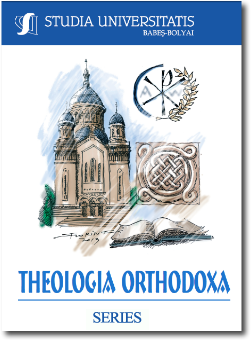MICHAEL PSELLOS’ THEOLOGICA I.30 AND THE BYZANTINE INTERPRETATIONS OF SCALA PARADISI XXVII/2.13
MICHAEL PSELLOS’ THEOLOGICA I.30 AND THE BYZANTINE INTERPRETATIONS OF SCALA PARADISI XXVII/2.13
Author(s): Oleg RodionovSubject(s): Eastern Orthodoxy
Published by: Studia Universitatis Babes-Bolyai
Keywords: Michael Psellos; Theologica; John Climacus; Ladder of Divine Ascent; Photius of Constantinople; Elias of Crete; byzantine commentaries; Church Slavonic translation;
Summary/Abstract: The article examines the exegesis of Michael Psellos on the most mysterious of the “difficult places” of the Ladder by John of Sinai — Step XXVІІ/2.13. This interpretation is one of the so-called Theologica treatises (Theol. I.30). It differs significantly from the rest of the Byzantine explanations of this “difficult place”. Michael Psellos decisively rejects the Christological interpretation of the “vision” and the questions of St. John. He also develops the doctrine of the accessibility to a human in present life of the vision of God in “symbols” and “forms” only. Higher contemplations are linked to the degree of detachment of the soul from the body. Unlike Michael Psellos, other interpreters, firstly, pay more attention to the context in which the chapter of the Ladder in question is located, secondly, they mostly prefer a Christological interpretation of St. John’s questions to the unknown interlocutor, thirdly, they ask themselves who this interlocutor was, an angel or Christ Himself. One of the anonymous Byzantine commentaries convincingly defends the point of view according to which John Climacus talked with Christ. This paper analyses all the extensive interpretations of the difficult passage, and on the basis of the handwritten tradition, draws the conclusion that the exegesis of Michael Psellos had much circulation in Byzantium along with other conceptions of the mysterious chapter. In addition, there has been noted the reception of Psellos’s interpretation in the first Slavic edition of the Ladder in 1647. Appendices I and II contain the edition of the Greek text of an anonymous Scholium and a fragment from the commentary by Elias of Crete respectively.
Journal: Studia Universitatis Babes-Bolyai - Theologia Orthodoxa
- Issue Year: LXVI/2021
- Issue No: 1
- Page Range: 147-164
- Page Count: 18
- Language: English

